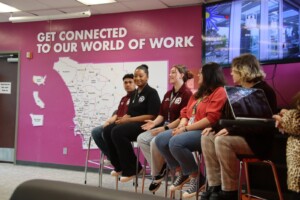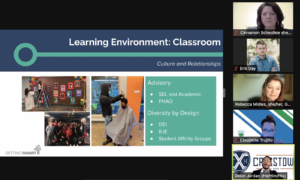Charters & Districts must work together
Great OpEd by James Merriman, NY Charter Center, and Bob Hughes, New Visions, on how districts and charter must work together to create coherent and effective portfolio of options for families.
—–
Last week, nine cities across the country signed a pact to reduce barriers between charter schools and public school districts, promising finally to work together to improve the school systems as a whole. New York City and its charter schools were among them.
Together, these cities educate more than 30% of urban public school students in the United States, and their commitment has the potential to spur a new era in education reform – one where successful reforms and innovations break out of their silos and begin spreading to school systems as a whole.
For New York, this couldn’t come at a better time.
Over the past decade, the city has succeeded at creating highly effective schools – both charters and traditional district schools – in some of the city’s most underserved communities.
It has attracted established national charter school operators and fostered excellent locally grown charters that are attracting families by the thousands. These charters have consistently outpaced city schools on state assessments and are widely recognized for their quality.
At the same time, organizations like New Visions for Public Schools, Urban Assembly and others have partnered with the city, the principals and teachers unions and community groups to create dozens of new, smaller district schools focused on college and career readiness.
A study this summer conducted by MDRC found that the city’s new small high schools were on track to have a 10% higher graduation rate than their peer high schools. Other existing schools – large and small – continue to excel.
Unfortunately, the best practices at these charter and district schools are not currently affecting enough students in the city public school system, and they’re not being actively spread. In fact, these charter and district schools rarely work together. Best practices, like having teachers and principals regularly visit other successful schools and learn from their peers what works, are simply not part of every school’s regular routine. Successful strategies are essentially bottled up.
It’s time to break this impasse.
The pact signed last week, dubbed the Charter-District Collaboration Compact and led by the Bill and Melinda Gates Foundation, is working to do just that. The compact aims to foster a more collaborative relationship between charter schools and the districts they reside in, allowing best practices and effective innovations to spread systemwide. Districts and charters signing the compact agree to “work together and influence each other for the benefit of all students in the city.”
Read more: http://www.nydailynews.com/opinions/2010/12/16/2010-12-16_educators_of_new_york_unite_charters_and_small_schools_must_work_together_for_th.html#ixzz18KH1eZEe





0 Comments
Leave a Comment
Your email address will not be published. All fields are required.